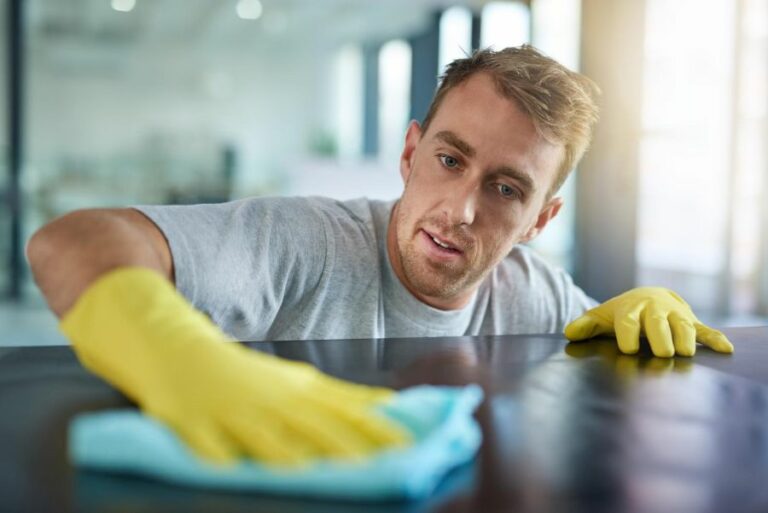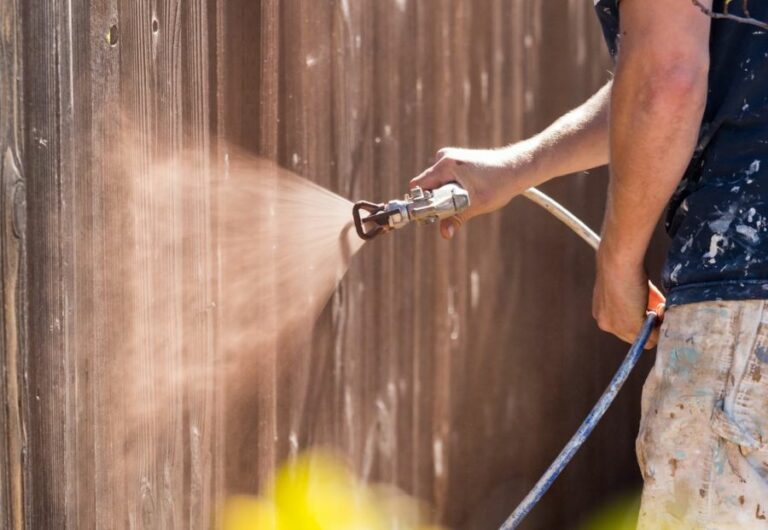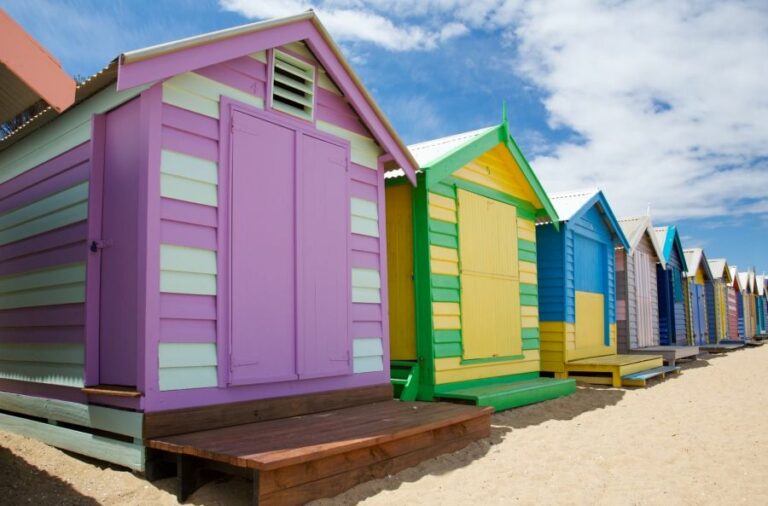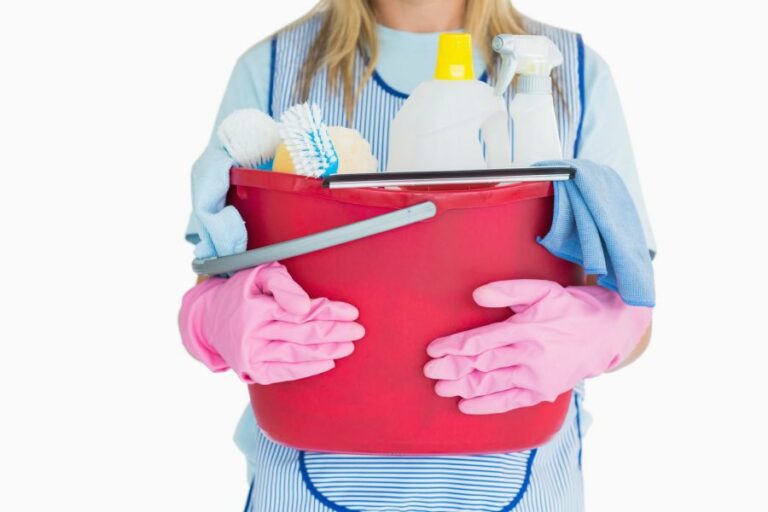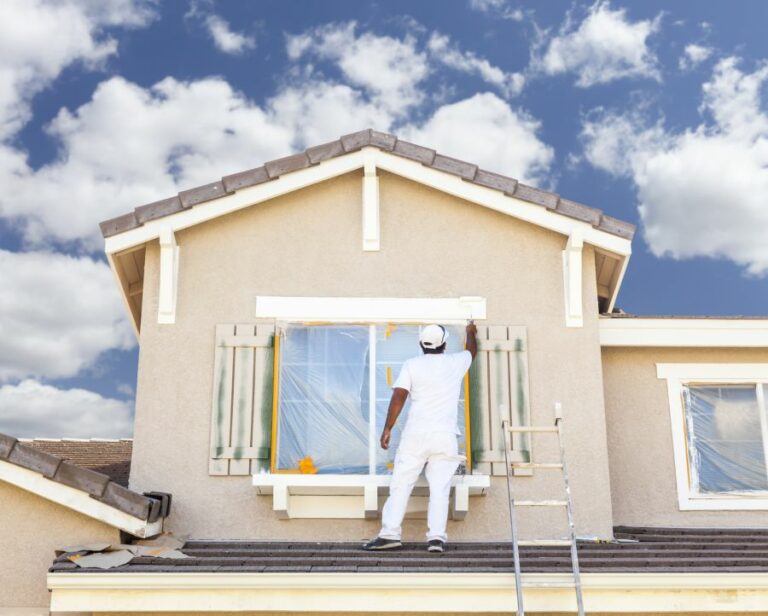Techniques To Remove Mold Pre-Painting. What Pros Say
Nobody wants mold to ruin the appearance and integrity of their walls. Luckily, there are effective techniques to remove mold before painting that can restore your environment’s aesthetics and health. With our extensive knowledge and experience in this area, we are confident that we can guide you through the process step by step, ensuring a successful outcome.
Techniques to remove mold pre-painting:
To remove the mold before painting, use bleach, water, vinegar, borax, or mold removal product. Apply the chosen solution, scrub the surface, and let it dry completely. Ensure proper surface preparation, including sanding and using mold-resistant primer, and then use mold-resistant paint to prevent future mold growth.

Tired of moldy walls affecting your paint job? Discover effective techniques to remove the mold before painting and get that flawless finish. Don’t let fungi ruin your home’s look – read on for expert guidance!
Contents
- 1 Methods for Eliminating Mold Prior to Painting
- 2 Do Professionals Clean Mold Before Applying Paint?
- 3 Is Mildew Removal Essential Before Painting?
- 4 Mold Removal Process Before Applying Kilz
- 5 Ridding Mold Effectively Without Paint Removal
Methods for Eliminating Mold Prior to Painting
Mold can be a significant problem for homeowners, as it not only harms the aesthetic value of your property but it can also pose health risks to you and your family.
When painting a room or a surface, it’s crucial to treat and remove any mold before proceeding, to ensure a long-lasting and mold-free result.
• Identifying Mold
Before we get into the techniques, it’s crucial first to identify mold correctly. Mold can come in various forms and can often be overlooked or mistaken for dirt.
Usually, mold is characterized as a fuzzy or slimy material that presents itself in spots or patches, with colors ranging from black, green, or even pink or orange. It can also emit a musty smell.
If you’re unsure whether it’s mold or not, The Environmental Protection Agency (EPA) provides guidelines and resources to help you identify mold effectively.
• Protection and Safety Precautions
When dealing with mold, you must take the appropriate safety measures to ensure you are not exposing yourself to potential health risks. The use of gloves, masks (preferably an N95-rated mask), and eyewear is highly recommended.
It’s also essential to keep the area well-ventilated to avoid inhaling mold spores during the removal process.
• Technique 1: Using Bleach and Water Solution
A popular method for removing mold is by using a solution of water and bleach:
- Mix one part bleach with three parts water.
- Apply the mixture onto the moldy surface using a spray bottle or sponge.
- Allow the solution to sit for at least 10-15 minutes.
- Scrub the surface with a scrub brush, cloth, or sponge to remove the mold.
- Rinse the surface with clean water and let it dry completely before painting.
Note: Test the bleach solution on a small, inconspicuous area first, as bleach can sometimes discolor or damage surfaces.
• Technique 2: Vinegar Solution
An alternative, eco-friendly option is to use white vinegar:
- Fill a spray bottle with undiluted white vinegar.
- Spray the vinegar onto the moldy surface and let it sit for at least an hour.
- Scrub the surface with a scrub brush, cloth, or sponge to remove the mold.
- Wipe the area clean with a damp cloth, and let it dry completely before painting.
• Technique 3: Borax Solution
Borax, a natural cleaning agent, is another option for mold removal:
- Mix one cup of borax with one gallon of water.
- Apply the borax solution to the moldy surface.
- Scrub the surface with a scrub brush, cloth, or sponge to remove the mold.
- Wipe away the mold and excess solution, and allow the surface to dry completely before painting.
Note: Do not rinse the surface with water after using borax, as it acts as a mold inhibitor, preventing mold from returning.
• Technique 4: Using a Mold Removing Product
Several mold removal products are available on the market to tackle mold effectively. These products are specifically designed to target and remove mold from surfaces.
Be sure to follow the instructions provided by the product’s manufacturer.
Note: Always wear gloves and any other necessary protective gear when using chemical-based mold removal products.
• Surface Preparation before Painting
Now that the mold has been removed, follow these steps to ensure that your surfaces are appropriately prepared before painting:
- Inspect the surface for any remaining mold or damage. Address any issues before proceeding.
- Sand the surface to create a smooth, even finish.
- Wipe the area with a damp cloth to remove any dust or debris left from sanding.
- Apply a mold-resistant primer to the surface to help prevent any future mold growth.
- Allow the primer to dry as per the manufacturer’s recommendations before applying paint.
• Choosing the Right Paint
Selecting the appropriate paint is essential for preventing future mold growth. Look for paint products that contain mold inhibitors or are labeled as mold-resistant. These paints are specifically designed to resist mold growth, ensuring your painted surfaces remain mold-free.
To conclude, prepping your surfaces and eliminating mold before painting will prolong the life of your paint job with a lower risk of mold recurring. By following the techniques and advice outlined in this article, you can achieve a clean, safe, and mold-free environment in your home.
Do Professionals Clean Mold Before Applying Paint?
One of the crucial steps in painting a surface is preparing it, and this includes dealing with mold. The presence of mold on the surface to be painted can affect the outcome and longevity of the paint job.
• The Importance of Cleaning Mold
Painting over mold without proper cleaning and treatment can lead to several issues, some of which are listed below:
- Poor paint adhesion: Mould can cause the paint to lose its grip on the surface, resulting in peeling or flaking.
- Faster deterioration of the paint film: Mould can cause the paint film to disintegrate over time, leading to a faster need for repainting.
- Health hazards: Mould can cause or exacerbate respiratory issues and allergic reactions. Painting over mold without treatment can hide the problem and allow mold growth to continue.
Therefore, it is essential to clean and treat mold before painting to ensure a successful and lasting paint job and to maintain a healthy living environment.
• Identifying and Assessing Mould Issues
Before beginning any mold remediation process, it is necessary to assess the extent of the mold problem. Generally, minor mold issues can be addressed by the painter, while more severe infestations may require the assistance of mold remediation specialists.
Some things to consider while assessing mold issues are:
- The size of the area affected
- Type of mold present
- The underlying cause of the mold growth
- Damage to the surface/material
For extensive mold problems, it is recommended to seek expert advice from a mold remediation specialist. The Environmental Protection Agency (EPA) provides guidelines on cleaning mold and when to seek professional help.
• Steps to Clean and Treat Mould
Once the mold issue has been assessed, the following steps can be taken to clean and treat the mold efficiently:
– Safety Precautions
Before starting the cleaning process, ensure proper safety measures are in place, such as wearing gloves, masks, and protective eyewear.
– Removing Damaged Surfaces
In some cases, the surface affected by mold may require removal and replacement. For example, drywall heavily infested with mold should be replaced.
– Cleaning Mould
A solution of water and mild detergent can be used to clean the mold from non-porous surfaces. For porous surfaces, a solution of water and bleach (1 cup of bleach to 1 gallon of water) can be used. Make sure the area is well-ventilated when working with bleach.
Using a scrub brush, apply the solution to the mold-affected areas and scrub thoroughly. Rinse the surface with clean water and allow it to dry completely. Dispose of used cleaning materials properly to prevent the spread of mold spores.
– Applying Mould-Resistant Primer
After the area has been cleaned and allowed to dry, a mold-resistant primer should be applied to the surface. This primer will help inhibit future mold growth and provide a better surface for the paint to adhere to.
– Painting the Surface
Once the primer has dried, the chosen paint can be applied. For best results, choose a high-quality paint that has antimicrobial properties to further inhibit mold growth.
– Addressing the Underlying Cause of Mold
To prevent mold from returning, it is essential to identify and address the root cause of mold growth, such as fixing leaks, improving ventilation, or regulating humidity levels.
• In Conclusion
Cleaning mold before painting is a critical aspect of ensuring not only an aesthetically appealing paint job but also a long-lasting and healthy environment.
By following the proper steps and investing in quality mold-resistant products, painters and homeowners can effectively treat mold issues and achieve a successful painting project.
Is Mildew Removal Essential Before Painting?
Mildew is a type of fungus that thrives in moist and warm environments. It typically appears as a thin, powdery, or furry growth on various surfaces, including painted surfaces.
Mildew can not only cause damage to the paint and the underlying material, but it can also pose several health risks to the occupants of the building.
Therefore, it is crucial to remove mildew before painting a surface, and here’s why.
• The Effects of Mildew on Painted Surfaces
Mildew can have several adverse effects on a painted surface. Some of them are:
- Discoloration: Over time, mildew can cause the paint to lose its color and become discolored, leaving an unsightly appearance.
- Peeling Paint: Mildew can cause paint to lose its adhesion to the surface it’s applied on, causing it to peel or blister.
- Structural Damage: If left untreated, mildew can feed on the organic materials present in paint and the substrate, leading to structural damage.
- Health Risks: Exposure to mildew can cause allergic reactions and respiratory issues, especially in individuals with asthma or other pre-existing lung conditions.
Given these consequences, it’s essential to remove mildew before applying a new coat of paint.
• How to Identify Mildew Infestation
Identifying mildew infestation is essential to rectify the issue before it causes further damage. Here are some signs to watch out for:
- Visible Signs: Mildew typically appears as black, grey, green, or sometimes white spots on the painted surfaces. It can also have a fuzzy or powdery texture.
- Smell: Mildew produces a distinct musty smell, which can be the first indication of its presence.
- Dampness: Areas with excessive moisture or humidity are more susceptible to mildew growth. Check for damp patches near leaky pipes, on walls near windows, and in poorly ventilated areas.
If you find any of these signs, it’s essential to act promptly and remove the mildew before painting.
• Steps for Mildew Removal Before Painting
Removing mildew is a simple process but requires proper care and precautions to ensure complete removal and prevent future growth. Here’s a step-by-step process for mildew removal:
– Step 1: Prepare the Area
Before beginning the mildew removal process, ensure proper ventilation and wear appropriate protective gear such as gloves, goggles, and a mask. Remove any loose or flaking paint with a scraper or wire brush, and cover surrounding areas to protect them from the cleaning solution.
– Step 2: Apply a Cleaning Solution
Prepare a mildew-killing solution by mixing one part bleach with three parts water. Alternatively, you can also use commercial mildew removers available in the market. Apply the solution to the affected surface using a brush or cloth and let it sit for 15-20 minutes.
– Step 3: Scrub the Surface
After allowing the cleaning solution to sit for some time, use a scrub brush to scrub the surface thoroughly. This will help in removing the mildew and any residual stubborn stains.
– Step 4: Rinse
Once the scrubbing is done, rinse the surface with clear water to remove any residue of bleach or cleaning solution. Allow the surface to dry completely before proceeding with painting.
– Step 5: Apply a Mildew-resistant Primer
Before applying the finish paint, using a mildew-resistant primer is crucial. This will help provide better adhesion for the new paint and inhibit future mildew growth. Apply the primer according to the manufacturer’s instructions and allow it to dry completely.
• Tips for Preventing Future Mildew Growth
To prevent mildew from returning and affecting your newly painted surface, consider the following tips:
- Proper Ventilation: Improve ventilation in areas prone to mildew growth, such as bathrooms and basements.
- Dehumidification: Use a dehumidifier to reduce humidity in damp areas.
- Use Mildew-resistant Paint: Consider using mildew-resistant paint for areas with a higher risk of infestation.
- Regular Maintenance: Routine maintenance, like cleaning and checking for leaks, will help keep mildew at bay.
By ensuring thorough mildew removal and adopting preventive measures, you can maintain the health and appearance of your painted surfaces. For more information on mildew control and prevention, visit the Environmental Protection Agency website.
Mold Removal Process Before Applying Kilz
Mold is a common problem that can affect many surfaces within our homes, particularly in humid or damp areas. It’s crucial to remove mold effectively to not only protect your health but also to maintain the structural integrity of your home.
Before applying a mold-resistant sealant like Kilz, you must clean and address the root cause of mold growth.
• Identifying the Extent of Mold Growth
You must first identify the scope and location of mold in your home. Look for mold growth on surfaces such as walls, ceilings, and flooring. Mold can appear in various colors, including black, brown, green, or white. It may have a fuzzy or slimy texture.
– Use a Mold Test Kit for Confirmed Analysis
To accurately assess the extent of mold in your home, use a mold test kit. These kits are readily available at home improvement stores, and they provide a definitive answer on whether you have mold present. For more information on mold testing, visit the U.S. Environmental Protection Agency’s (EPA) website.
• Preparing for Mold Removal
Before proceeding with mold removal, ensure you have the necessary protective gear to safeguard your health. Porous materials with mold, such as drywall or carpet, may require discarding and replacement.
– Gather Essential Materials and Safety Gear
To effectively remove mold, you’ll need:
- Safety goggles
- Rubber gloves
- N-95 respiratory mask
- Plastic or disposable coverall
- A stiff bristle brush
- A HEPA vacuum
- Disposable rags or paper towels
- A plastic bag for moldy materials
Additionally, gather cleaning supplies such as:
- Water
- Dishwashing detergent
- Bleach (optional)
- A non-ammonia cleaner (for particularly stubborn mold)
• Removing Mold Safely and Effectively
Before starting your mold removal project, ensure the area is well-ventilated. Open windows and doors to release mold spores outdoors.
– Cleaning Mold with Detergent and Water
- Mix a solution of dishwashing detergent and warm water in a bucket.
- Wet a disposable rag or paper towel with the cleaning solution.
- Wipe down the moldy surface, applying pressure to remove the mold from the material.
- Use a stiff bristle brush to scrub stubborn mold.
- Dispose of used rags or paper towels in a sealed plastic bag.
- Repeat until the mold is no longer visible.
Remember to resoak the rag or paper towel with the cleaning solution as necessary.
– Additional Cleaning Steps for Stubborn Mold
If mold is particularly stubborn and not coming off with detergent and water, follow these steps:
- Rinse the surface with clean water using a fresh rag or paper towel.
- Mix a solution of non-ammonia cleaner and water, following the product’s recommended ratio.
- Apply the solution to the moldy area using a disposable rag or paper towel.
- Scrub the area with a stiff bristle brush.
- Rinse the surface with clean water and a fresh rag or paper towel.
- Repeat as necessary until the mold is removed.
– Using Bleach to Sanitize the Surface (Optional)
If desired, you can bleach the affected area to kill the remaining mold spores. However, the EPA does not recommend using bleach for mold removal on porous surfaces, as it may not effectively penetrate the material.
Mix a solution of 1 cup bleach with 1 gallon of water. Apply the diluted bleach to the cleaned surface and let it sit for 10 minutes. Rinse the area thoroughly with clean water and dry it with a clean rag or paper towel.
• Addressing the Root Cause of Mold Growth
Mold growth in your home is likely due to excess moisture. To prevent mold from returning, identify and address the root cause of moisture, such as leaks or poor ventilation.
Ensure your home is adequately ventilated, particularly in bathrooms, laundry rooms, and kitchens. Use exhaust fans, dehumidifiers, or open windows to reduce humidity levels. If mold growth is due to a water leak, repair the leak and thoroughly dry the affected area before applying Kilz.
• Applying Kilz for Mold Prevention
Once you’ve removed the mold and addressed the root cause, it’s time to apply a mold-resistant sealant like Kilz.
Follow the manufacturer’s instructions to prepare and apply the product, ensuring you cover the entire affected area for maximum protection against mold regrowth.
In summary, mold removal and prevention require identifying the extent of the issue, addressing the root cause, and effectively cleaning the affected areas. By following these steps and applying a mold-resistant sealant like Kilz, you’ll protect your home and your health from the hazards of mold growth.
Step | Description |
|---|---|
1 | Put on protective clothing, gloves, and a mask to prevent exposure to mold spores. |
2 | Open windows and doors to ventilate the area and use a fan if necessary. |
3 | Create a cleaning solution by mixing one cup of bleach with one gallon of water. |
4 | Apply the bleach solution to the moldy area using a spray bottle, sponge, or cloth. |
5 | Allow the bleach solution to sit on the surface for 10-15 minutes to kill the mold. |
6 | Scrub the moldy area with a bristle brush, sponge, or cloth to remove the mold. |
7 | Rinse the surface with clean water to remove any remaining bleach solution and mold. |
8 | Dry the surface completely using clean cloths, towels, or a fan to prevent mold regrowth. |
9 | Apply Kilz primer to the clean, dry surface to seal and prevent future mold growth. |
Ridding Mold Effectively Without Paint Removal
Mold can be a common problem in homes and buildings, especially in areas with high humidity levels or poor ventilation. It can cause various health issues, such as allergies, asthma, and respiratory problems.
While removing and repainting affected surfaces can be a solution to mold growth, it can also be time-consuming and costly. Therefore, knowing how to get rid of mold without removing paint is essential.
• Identifying Mold Growth
Before getting rid of mold, it’s crucial to identify the extent of the problem. Mold often appears as dark green, black, or brown patches on walls and other surfaces.
A musty smell is also a common indicator of mold presence. Pay close attention to damp or humid areas, such as bathrooms, basements, and kitchens, as these are more prone to mold growth.
• Gather the Necessary Supplies
To eliminate mold without affecting the paint, gather the following items:
- Protective gear (gloves, mask, and goggles)
- A soft-bristle brush or sponge
- A spray bottle
- Water
- Mild detergent
- White vinegar, baking soda, or hydrogen peroxide
- Clean, dry cloths or paper towels
It’s crucial to wear protective gear while cleaning mold-infested areas to avoid potential health hazards. Moreover, using natural cleaning solutions like vinegar, baking soda, or hydrogen peroxide is recommended, as these are less likely to damage the paint compared to harsh chemicals like bleach.
• Prepare the Cleaning Solution
To create a safe and effective cleaning solution, follow these steps:
- Fill the spray bottle with water.
- Add a few drops of mild detergent.
- Add white vinegar or a few tablespoons of baking soda or hydrogen peroxide.
Make sure to shake the solution well to mix the ingredients thoroughly.
• Cleaning the Mold
Follow these steps to clean mold without damaging the paint:
- Spray the solution onto the affected area, covering the entire mold-infested surface evenly.
- Allow the solution to sit for at least 10 to 15 minutes, giving it time to break down the mold.
- Gently scrub the area with a soft-bristle brush or sponge, taking care not to damage the paint.
- Wipe the area with a clean, damp cloth or paper towel to remove the mold residue and cleaning solution.
- Dry the surface with a clean, dry cloth or paper towel to eliminate any leftover moisture.
During the cleaning process, ensure proper ventilation in the room to speed up the drying process and minimize the risk of mold re-growth.
• Preventing Future Mold Growth
Cleaning mold-infested surfaces is only half the battle. Preventing future mold growth is just as important, especially in rooms where mold is more likely to reappear. Here are some tips for preventing mold growth:
- Ensure proper ventilation by opening windows or using exhaust fans in areas prone to mold, such as bathrooms and kitchens.
- Regularly check and fix any water leaks or plumbing issues.
- Maintain a relative humidity of less than 60% in your home. A dehumidifier can be used to help achieve this.
- Clean and dry any damp or wet materials within 24 to 48 hours to prevent mold growth.
- Use mold-resistant paint, especially in high-humidity areas of your home.
• In Conclusion
Mold growth is a common problem that can adversely affect the indoor air quality, health, and aesthetics of your home. Fortunately, it’s possible to get rid of mold without removing paint by using gentle cleaning solutions like vinegar, baking soda, or hydrogen peroxide.
Moreover, adopting preventive measures can further ensure that mold doesn’t reappear. For more information on mold prevention and control, you can visit the United States Environmental Protection Agency’s (EPA) website.
Step | Description |
|---|---|
1. Prepare the area | Clear the area of furniture, decorations, and other items. Cover the floor with plastic to protect it from the cleaning solution. |
2. Wear protective gear | Wear gloves, a mask, and goggles to protect yourself from mold spores and cleaning agents. |
3. Mix a cleaning solution | Combine 1 part bleach with 3 parts water in a spray bottle or bucket. |
4. Apply the cleaning solution | Using a cloth or sponge, apply the cleaning solution to the moldy area. Let it sit for 15-20 minutes (or the bleach manufacturer’s recommended time). |
5. Rinse with water | After the waiting period, dampen another cloth or sponge with water and gently wipe the area to remove the cleaning solution. |
6. Dry the area | Use a clean, dry cloth or towel to dry the area thoroughly. |
7. Ventilate the room | Open windows and doors to allow airflow; use a fan or dehumidifier to help dry out the room and reduce humidity. |

